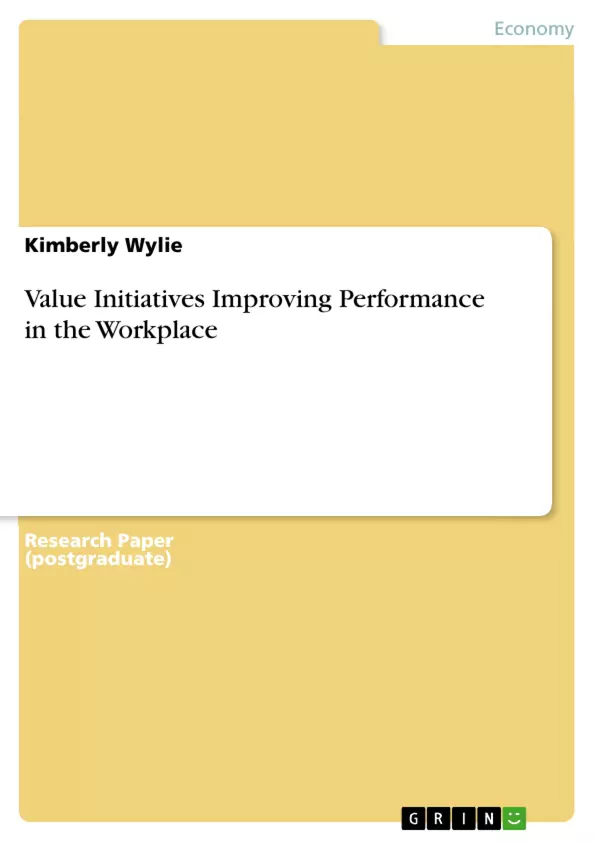Today’s hyper-competitive world necessitates that businesses continuously take strategic actions to sustain highly competitive performance. It is these actions, which lead to the competitive advantages that seal a company’s fate. Without even a small competitive advantage on their side, businesses are doomed to stumble and eventually be left along the wayside of their industry.
A globalized economy has opened new doors of opportunity for organizations; that is certain. Customers can now be solicited around the globe. Thanks to technology, communication that once took days, if not weeks, to transact now can be accomplished instantaneously. Geographic and cultural boundaries have begun to become invisible as a world economy develops. However, just as there are new opportunities to be taken advantage of, new threats have arisen as well.
In the rapidly changing environment that organizations now must operate in, traditional human resources approaches have become of less value. Strategic human resource systems are now receiving renewed attention, as a means of building and strengthening business (Chiavenato, 2001). Human resources have become increasingly important in today’s organizational strategies, especially in the improvement of individual competencies. Although there is a variety of ways an organization can pursue sustainable competitive advantage, this paper will frame its discussion within the context of Human Resource Management (HRM) strategies, in the form of value initiatives directed at the improvement of individual performance.
In this context, value initiatives are only a positive addition to an organization’s strategic arsenal, when they improve the performance of the individual members. They are worth the effort only when they enrich individual actions. It follows that the practical way to measure the success of values initiatives is to determine: To what extent they improve operations? Do they produce better products? Promote faster service? Expand staff capacity? Do they add flexibility and focus to the organization? How do they specifically enhance the use of time, machinery, and capital?
Inhaltsverzeichnis (Table of Contents)
- Chapter 1 TOPIC
- Introduction
- Historical Perspective
- Purpose of this Study
- Problem Statement
- Significance of this Study
- Research Hypothesis
- Limitations
- Assumptions
- Conceptual Framework
- Definition of Terms
- Summary
- Chapter 2 REVIEW OF RELATED REFERENCES
- Introduction
- Literature Review:
- Effective Human Resource Management Facilitates Sustainable Competitive Advantage
- Knowledge and Competency Sustaining Performance
- Capability Possession Key to Competitive Advantage
- Employee Development and Sustainable Performance
- High Workplace Attitudes Affect Workplace Performance and Market Value
- Racial Diversity and Organizational Performance
- Summary
- Chapter 3 METHODOLOGY
- Introduction
- Data Source
- Sample Design
Zielsetzung und Themenschwerpunkte (Objectives and Key Themes)
This study investigates the relationship between value initiatives, human resource practices, and sustained organizational performance. It examines how implementing value initiatives such as training, job enrichment, and internal labor development can contribute to improving and sustaining organizational performance.
- The impact of value initiatives on individual capabilities and workplace productivity.
- The role of human resource practices in building sustainable competitive advantage.
- The connection between employee development and organizational performance.
- The influence of workplace attitudes and diversity on organizational performance.
- The effectiveness of training, job enrichment, and internal labor market development in enhancing organizational performance.
Zusammenfassung der Kapitel (Chapter Summaries)
Chapter 1 provides an introduction to the study, outlining its purpose, problem statement, significance, research hypothesis, limitations, assumptions, conceptual framework, and definitions of key terms. Chapter 2 presents a comprehensive review of relevant literature, exploring the connections between effective human resource management, sustainable competitive advantage, knowledge and competency, capability possession, employee development, high workplace attitudes, racial diversity, and organizational performance. Chapter 3 delves into the methodology employed in the study, outlining the data source, sample design, and data analysis techniques.
Schlüsselwörter (Keywords)
The primary focus of this study lies in understanding the relationship between value initiatives, human resource practices, and sustained organizational performance. Key concepts explored include human capital, sustainable competitive advantage, employee development, workplace attitudes, diversity, training, job enrichment, internal labor market development, and data analysis techniques.
- Citation du texte
- Kimberly Wylie (Auteur), 2004, Value Initiatives Improving Performance in the Workplace, Munich, GRIN Verlag, https://www.grin.com/document/57783



